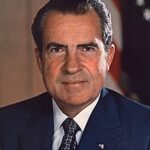The Decision to End Conscription
President Nixon officially ended the military draft on January 27, 1973, fulfilling a key campaign promise. The decision marked the culmination of the Gates Commission’s recommendations and years of anti-war protests. Nixon signed the legislation creating an all-volunteer force just days after the Vietnam War ceasefire agreement. The timing was strategic, allowing America to transition away from an unpopular conscription system.
Building the All-Volunteer Force
⚠️ The transition required significant military reform and increased compensation packages. Defense Secretary Melvin Laird championed higher pay scales and improved benefits to attract recruits. The military invested heavily in recruiting campaigns and professional development programs. 📊 Congress approved substantial budget increases to fund the volunteer system’s higher personnel costs.
Immediate Implementation Challenges
Military leaders initially worried about recruitment shortfalls and maintaining force strength. The Pentagon developed sophisticated marketing strategies targeting different demographic groups. 💰 Pay increases of 61% for enlisted personnel made military service more competitive with civilian employment. Training programs emphasized career development and technical skills acquisition.
Impact:
Social and Political Transformation
🔥 The end of the military draft dramatically reduced campus protests and anti-war demonstrations. Young Americans no longer faced forced military service, fundamentally changing their relationship with government. Social tensions that had divided communities during Vietnam began to heal. The decision removed a major source of political conflict between generations.
Military Professionalization
The all-volunteer force attracted higher-quality recruits who chose military careers voluntarily. 📊 Retention rates improved significantly as soldiers served by choice rather than compulsion. Military units became more cohesive and disciplined without reluctant draftees. Professional military education expanded, creating a more skilled and capable force.
Long-term Strategic Benefits
🌍 America’s volunteer military proved highly effective in subsequent conflicts and peacekeeping missions. The professional force maintained readiness without the social disruption of conscription. Military families developed stronger traditions and institutional knowledge. The decision created the foundation for America’s modern military superiority.
Lasting Historical Significance
Nixon’s decision represents one of the most successful military policy changes in American history. The all-volunteer force has operated effectively for over five decades without major problems. 💰 Despite higher costs, the system proved economically efficient through improved productivity and reduced turnover.
